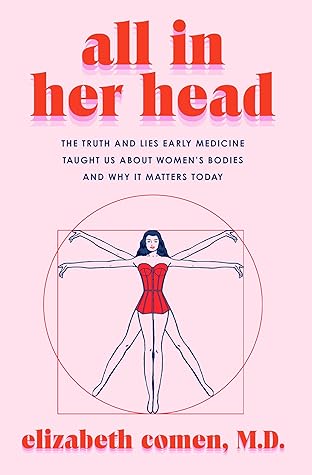More on this book
Community
Kindle Notes & Highlights
Read between
January 12 - February 6, 2025
It haunts our footsteps as we navigate the medical maze of women’s health that was built by men whose ideas about women, while sometimes well-intentioned, were limited at best, paranoid, misogynist, and abusive at worst.
When a woman thinks alone she thinks evil.
Today, the practice of cosmetic medicine is one that walks the line between empowering women to control their bodies and trapping them in a gilded cage of punishing beauty standards.
Since the time of the ancient Greeks, medicine had been captive to the idea of the male default: men’s bodies were the healthy standard.
Women’s lesser status, Le Bon wrote, “is so obvious that no one can contest it for a moment; only its degree is worth discussion.” They were “the most inferior forms of human evolution”; they were “closer to children and savages than to an adult, civilized man.”
The alternative—that women might be equal, or, God forbid, more evolved—was too horrifying to entertain.
The proper place for a book, per these men, was not in a woman’s hands, but balanced on top of her head, the better to perfect her posture.
They were phantoms, boogeymen, conjured by a medical establishment and a society that were deeply alarmed by the mere possibility of a woman developing physical strength, stamina, or, God forbid, muscles.
How athletic could a woman be before she didn’t count as a woman anymore?
a little knowledge being more dangerous than none.
considering the likely, common diagnosis before the rare one: when you hear hoofbeats, think horses, not zebras.
Ygritte: What’s fainting? Jon Snow: When a girl sees blood and collapses. Ygritte: Why would a girl see blood and collapse? . . . Girls see more blood than boys.
The consumptive girl lived at the tantalizing nexus of all three: being made at once sexually desirable by sickness yet also too sick to consummate that desire.
In medical education, the harm caused to women’s health by abusive partners is an afterthought.
she takes back control: the less attractive she is to men, the more they leave her to live as she pleases.
By the 1870s, pregnancy and childbirth and all its attendant complications were suddenly no longer the purview of the female midwives who had been dealing with them for centuries, but of men, in the newly specialized field of modern gynecology.
She was, in the end, not a patient but a curiosity. They poked her, questioned her, gawked at her, and came up with a story they insisted was true,
Women are the other, the variable, the weird and slightly defective riff on a norm defined by—and inclusive only of—men.
Autoimmune diseases, in which the body’s immune system mistakes its own healthy tissues for foreign invaders and attacks them, are among the trickiest to diagnose. For some, there is no blood test to detect them, no scans on which the disease will make itself known; there is only the patient’s own knowledge of her body, her experience. Her voice is everything, and yet, too often, nobody listens.
the female external genitalia was termed “pudenda,” a Latin word that means “things to be ashamed of.”
Nobody, on the other hand, is promoted just for kindness, for empathy, or for making patients feel seen. Indeed, the most extravagant praise and rewards in this paradigm are reserved for doctors who rarely see patients at all—or who see them as background actors in a story about scientific discovery.


